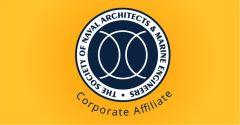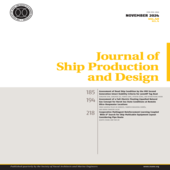The SNAME Great Lakes / Great Rivers Section Hosted Their Fall Meeting in Ann Arbor
On September 18-19, the SNAME Great Lakes / Great Rivers Section hosted their annual Fall Meeting at the University of Michigan in Ann Arbor. The event began on the evening of September 18th with an icebreaker reception at the Ford Robotics Building, where attendees from industry and academia gathered to network and discuss maritime trends in an informal setting.
On the morning of September 19th, the meeting continued at the Michigan League with a series of technical presentations, webcast as part of the hybrid format. The presentations explored the optimization and challenges of designing zero-emission ships, comparing alternative fuels such as ammonia, methanol, and LNG, and addressing the integration of lithium-ion batteries into vessels. Several graduate students from the University of Michigan also presented research on underwater robotics, machine learning for shipwreck detection, and the importance of ontological anchors in ship design, providing valuable academic insights to the discussion.
In the afternoon, attendees toured the Aaron Friedman Marine Hydrodynamics Laboratory, which is equipped with a towing tank and other facilities for hydrodynamic testing. The event concluded with meetings with several University of Michigan student groups, including UM Autonomy, Human Powered Submarine, Robo Sub, and Electric Boat, fostering engagement between industry professionals and the next generation of engineers.
Overall, the Great Lakes / Great Rivers Section Meeting was a success in that it fostered meaningful collaboration between academia and industry, advancing key discussions on sustainable ship design and emerging technologies in the maritime sector. The event fostered engagement between professionals and students, aligning with SNAME’s mission to promote innovation, knowledge sharing, and the development of future engineers. The next Great Lakes / Great Rivers Section Meeting is scheduled for February 2025 in Cleveland, Ohio.





















